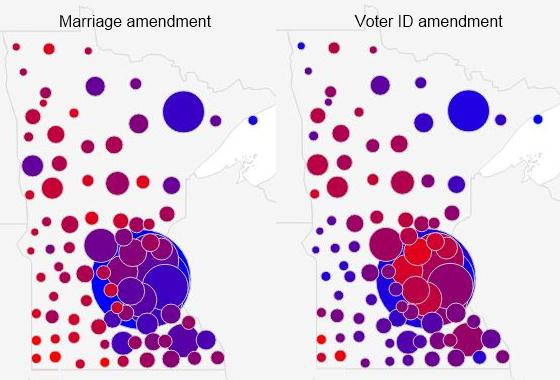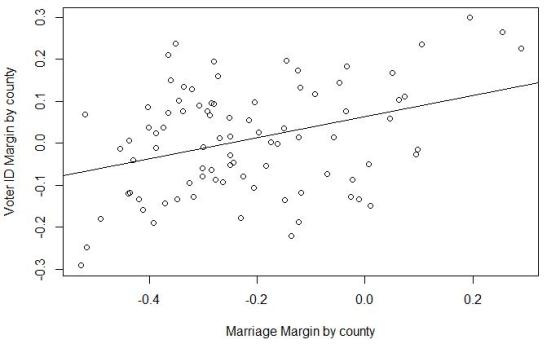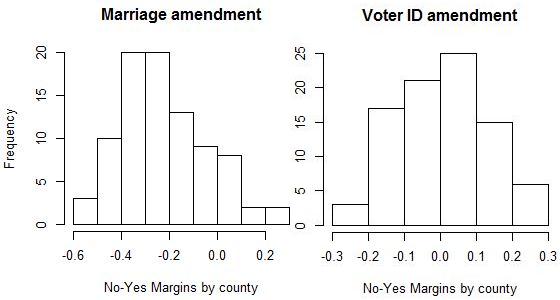
The Rural-Suburban divide on the Minnesota amendments
With the results of the 2012 election now almost entirely in the books, Photo Voter ID is failing 52.3%-46.4%, a 5.9% margin. Marriage is failing 51.1%-47.6%, a 3.5% margin. In the end, Photo Voter ID lost by two and a half points more than the Marriage amendment, a result practically unthinkable only a few weeks ago.
If you were watching the results come in, the two constitutional amendments seemed to track each other for most of the night. The no side of Voter ID began to outperform the no side on the Marriage amendment by about a point and then a point and a half and then two and a half, but they mostly seemed to fall and rise with each other over the course of the evening.
But this was a mirage.
While suburbia weighed in against the Marriage amendment, they supported Photo Voter ID. In rural Minnesota it was largely the opposite trend, with voters there supporting the Marriage amendment, yet opposing the Photo Voter ID amendment.
You can see the difference quite clearly if you compare the map of Marriage amendment results by county with the map of Photo Voter ID results by county.

(The above is a screen shot, the actual maps are Interactive!)
On the Marriage map the suburbs are blue and purple while greater Minnesota is mostly red. On the Photo Voter ID map the suburbs are mostly red while greater Minnesota is blue and purple.
Here are those results it in a scatter plot:

The x-axis is the margin on the Marriage amendment by county, while the y-axis is the margin on the Photo Voter ID amendment by county. While there is a positive correlation (.355) between the two, there’s also a ton of variance with dots all over the place around the regression line. So how a county voted on one amendment, didn’t really tell you much about how they voted on the other one.
What this means, in the end, is that there were a ton of amendment ticket splitters. And in both ways.
Something else interesting, there were some parts of the state that were really for the Marriage amendment, while support and opposition to the Photo Voter ID amendment was more evenly distributed.

On the Marriage amendment there were a few counties that were essentially universally for it, there were relativity few that were against it, and a whole bunch in the middle that were moderately for it. It failed to pass of course because most of the counties that voted for the Marriage amendment contain few people, while those that voted against it contain a bunch.
The Photo Voter ID by county vote distribution, on the other hand, is centered around zero, and is a textbook example of a normal distribution.
Summarized another way:
| Marriage | Voter ID | |
| Min | -53% | -29% |
| 1stQ | -35% | -9% |
| Median | -25% | 1% |
| Mean | -22% | 1% |
| 3rdQ | -12% | 10% |
| Max | 29% | 30% |
These two different amendments were defeated by two different coalitions. The Marriage amendment was defeated by a coalition of urban and suburban voters, while the Photo Voter ID amendment was defeated by a coalition of urban and rural voters.
The fact that both amendments failed is pretty amazing on its own. The fact that the Photo Voter ID amendment failed on its own merits, and not by piggy backing on the Marriage amendment, is even more amazing.
Thanks for your feedback. If we like what you have to say, it may appear in a future post of reader reactions.


